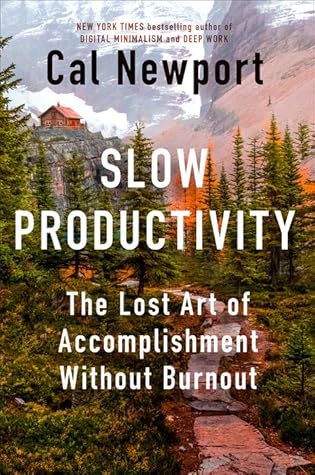More on this book
Community
Kindle Notes & Highlights
This initial insight developed into the core idea that this book will explore: perhaps knowledge workers’ problem is not with productivity in a general sense, but instead with a specific faulty definition of this term that has taken hold in recent decades. The relentless overload that’s wearing us down is generated by a belief that “good” work requires increasing busyness—faster responses to email and chats, more meetings, more tasks, more hours.
This use of a clear productivity metric to help improve clearly defined processes might sound obvious, but the introduction of this approach enabled explosive leaps forward in efficiency. In the seventeenth century, for example, it was exactly this type of metric-driven experimentation that led to the Norfolk four-course system of planting, which eliminated the need to leave fields fallow. This in turn made many farmers suddenly much more productive, helping to spur the British agricultural revolution.
methods is the same: productivity. There was, of course, a well-known human cost to this emphasis on measurable improvement. Working on an assembly line is repetitive and boring, and the push for individuals to be more efficient in their every action creates conditions that promote injury and exhaustion. But the ability for productivity to generate astonishing economic growth in these sectors swept aside most such concerns.
In knowledge work, by contrast, individuals are often wrangling complicated and constantly shifting workloads. You might be working on a client report at the same time that you’re gathering testimonials for the company website and organizing an office party, all the while updating a conflict of interest statement that human resources just emailed you about. In this setting, there’s no clear single output to track. And even if you do wade through this swamp of activity to identify the work that matters most—recall Davenport’s example of counting a professor’s academic publications—there’s no
...more


